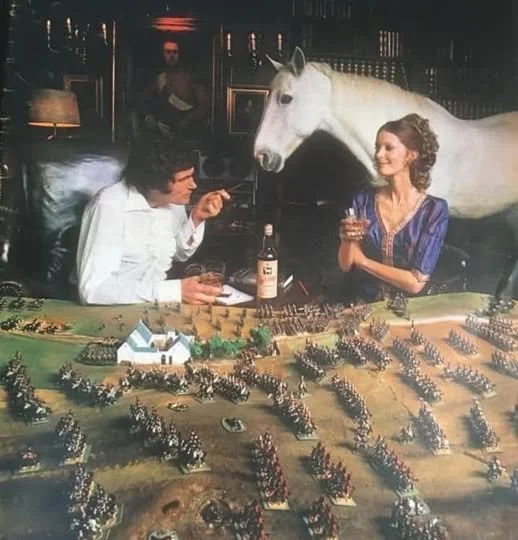TTS AAR: Venice Abroad versus Marian Romans - Take 2
/After my narrow defeat at the hands of Peter’s Marian Romans, there was time for another game, so we cleared everything from the table and started again.
Peter immediately saw an opportunity to overwhelm me on my right hand flank: sending his men forward as fast as they could go.
In response, I retreated my infantry on that side back into my fortified camp, hoping to lure him forward even further to expose his right flank to my Knights.
The Romans are very manoeuvrable, however, and, with my infantry temporarily not a threat, Peter now snapped them around to present a solid frontage to the marauding Venetian horse.
My Knights turned to pin the Romans in place, and out of my camp came my infantry again, looking for those elusive Roman flanks!
I needed some form of strike now, whilst the Romans were still somewhat off-balance trying to fight in two different directions at once.
The oportunity came with my Someone Has Blundered stratagem card: one of the Roman legionary units replayed an activation card with their General, and I converted their move into a smart about turn, exposing their rear to the ternder ministrations of my Later Knights.
This did expose my Knights to a counter-charge from a small unit of Legionaries on their flank, but I thought the risk worthwhile to knock a full unit of Legionaries off the table and force lots of other Romans to make a Rally check.
I was now in a cracking position: on the advance with one command of Knights, the other poised to attack, and with infantry threatening the Roman flank. Surely it would now just be a matter of rolling up the Latins and sending them scurrying from the field!
Unfortunately not!
The Romans are a tough bunch, Peter a canny commander, and those two factors combined with a poor run of cards knocked the Venetians for six!
First up, the light infantry in the woods twice failed to charge the Roman flank, also ending that command’s activation before it could really get started.
Secondly, my Later Knights proved once again to be wearing cardboard armour, and just evaporated from the field. Note that, in the second picture, Peter has also drawn a ten over a nine to be able to continue his charge!
My dreams of victory over the Master had turned into nightmares and, at this point, I very maturely threw all my toys out of the pram and threatened to resign the game and go home in a huff!!!
I eventually calmed down, however, and got back to the business of trying to retrieve the situation. Here’s an overview shot showing what’s what. As you can see, it’s not quite as bad as it could have been for the Venetians: the forces remaining and tactical positions are about even.
On the far right of the field, the Roman cavalry had been trying to get around my flank, but had been stymied by a unit of Venetian Spearmen. These then chased the Roman horsemen right back to their camp, but wouldn’t quite get in to finish them off before the end of the game.
Meanwhile, a confused melee broke out in the centre of the field, with the remaining units on both sides fighting for the game.
First up, the Venetian Alabardiers had outflanked a Roman Legionary unit, but just couldn’t manage to break the veterans, only managing to drive them back into the Roman camp.
Next, my remaining units of Knights charged forward. One managed to break another unit of Legionaries, but was thenkilled by light cavalry coming at it from the flanks and rear.
The other also broke a unit of Legionaries, leaving the game poised on an absolute knife edge: next kill would win the victory!
All I needed to do was to let Peter’s current turn end, then I had a couple of chances to win the game. Unfortunately, I never got that chance: Peter’s last activation was to send just about his last unit of Legionarirs into the flank of my Knights. They had two chances to hit, only hit once, and all I needed was a 6+ to save. Naturally I failed, lost four coins (their General had nowhere to go), and that was that!
Well that had been a very bloody game of To The Strongest and a very frustrating one for the Venetians.
They had defintiely had the advantage after the initial deployment and early stages of the game; then had many chances to do some serious damage to the Romans in the middle of the game before the Aces hit; and even in the game’s second half seemed to have done enough to win.
But that’s the way it goes sometimes: and all credit to Peter for rescuing what seemed like a doomed situation at least twice.
I’ll get him eventually!












































































































































